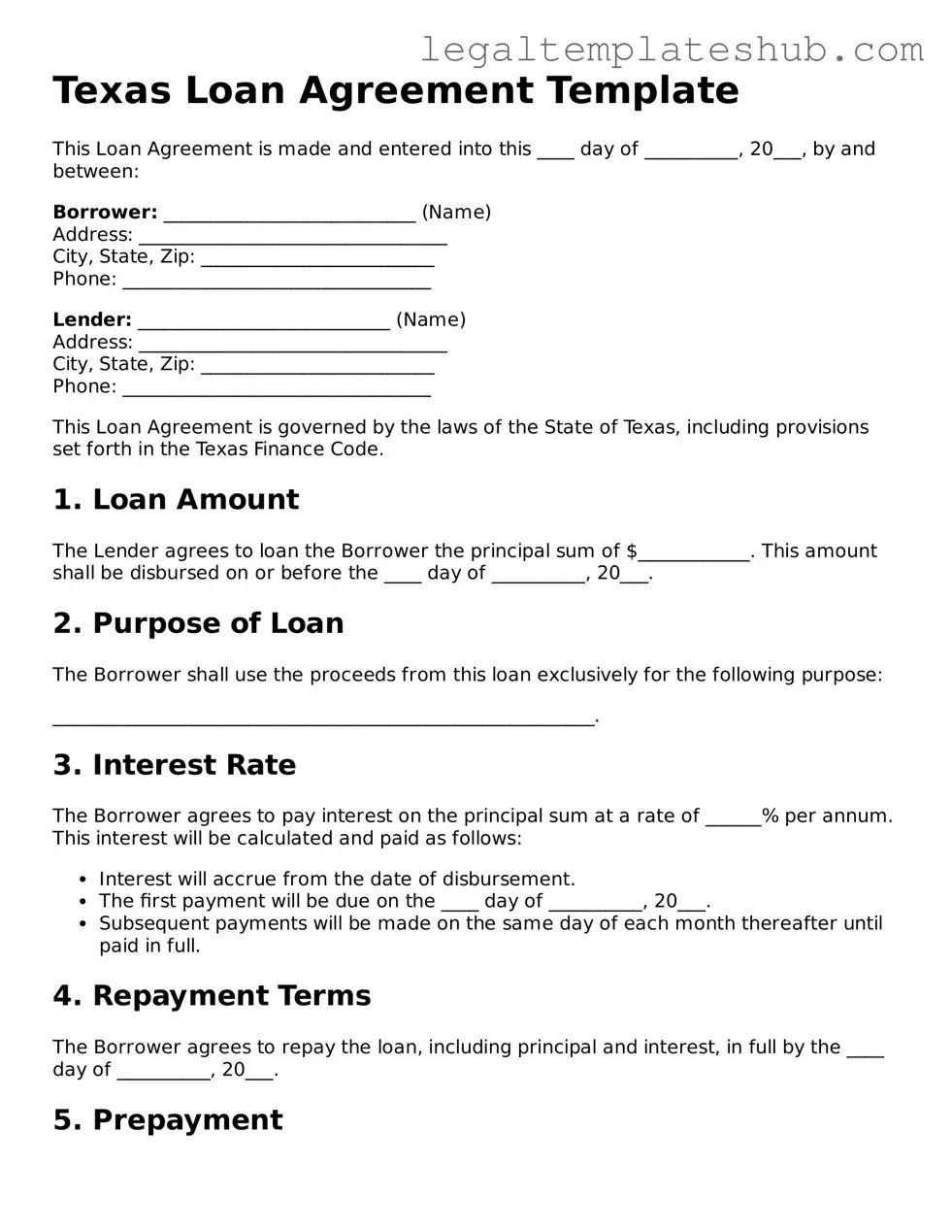Printable Loan Agreement Document for Texas
A Texas Loan Agreement form is a legal document that outlines the terms and conditions under which one party lends money to another. This form serves to protect both the lender and the borrower by clearly defining the repayment schedule, interest rates, and any collateral involved. To ensure a smooth lending process, it’s important to fill out this form accurately; click the button below to get started.
Access Editor
